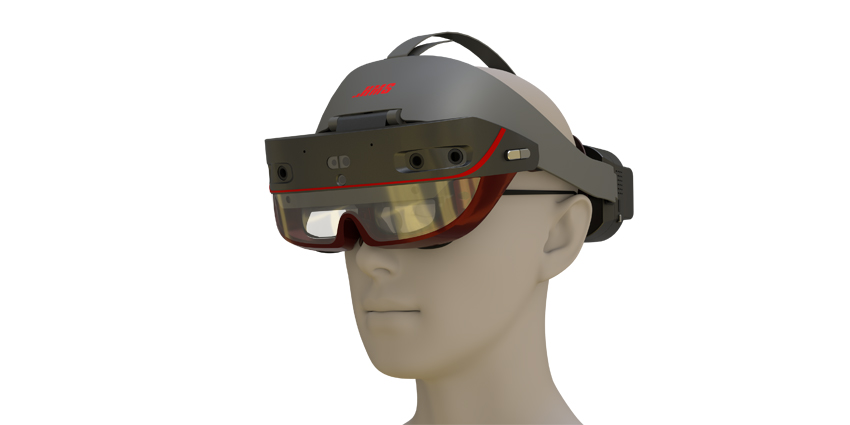One of the fastest-growing and most accessible parts of the extended reality landscape, the AR (Augmented Reality) industry is taking the world by storm. According to Grandview Research, the global market for augmented reality was valued at about $17.67 billion in 2020, and will likely grow at around 43.8% up to 2028.
Rapidly evolving technology in the AR space, from more ergonomic wearables to lag-free 5G connectivity, is helping the industry to grow. What’s more, many businesses are now using augmented reality to improve customer service and collaboration in a post-pandemic world.
Just like virtual reality, augmented reality offers amazing opportunities for brands willing to invest. By 2028, the AR space could be worth as much as $340.16 billion! The following statistics will help you to understand the value of the AR market for 2022.
The Rise of the Augmented Reality Market
Augmented Reality has been earning increasing attention in the digital world for some time now, particularly as AI technology becomes more accessible on a range of smartphones. Continued innovations in the AR realm, combined with the changing landscape for communication and collaboration, has fuelled extensive experimentation in the area.
In recent years, we’ve seen the arrival of everything from AR-supported shopping platforms to educational tools for AR, and even website-based AR, ensuring everyone can get a taste of the immersive world.
- Some aspects of augmented reality are growing faster than others. The smartphone and handheld devices display segment is currently predicted to see the highest CAGR up to 2028 (45%). Additionally, the industrial and manufacturing application segment is achieving some of the highest revenue shares in the business world.
- By 2024, Statista believes there will be around 1.7 billion augmented reality users worldwide accessing the technology from their smartphone – a rise of 1.5 billion since 2015. The number of customers accessing AR through wearables will increase too.
- AR is becoming increasingly valuable in the ecommerce and retail environment. Around 63% of shoppers say access to AR improves their shopping experience. A further 61% of online shoppers say they prefer to make purchases on sites that offer AR.
- Consumers believe AR is the most disruptive technology – even more so than artificial intelligence. According to the survey, COVID-19 also had a significant impact on the increased adoption of AR technology. By 2030, enterprises are expected to account for the largest share of the AR market.
- Outside of gaming and entertainment, respondents expect the most disruption from the immersive technology landscape will happen in the healthcare space over the next 12 months. 38% of respondents pointed to healthcare as the main area for disruption. The same survey also found expectations for AR technologies are currently outpacing VR.
- Approximately 75% of the global population and almost 100% of the smartphone user population will be frequent users of AR by 2025 according to the Snap Consumer Global AR report. The study also found 67% of people primarily use AR at home for gaming, communication, entertainment and shopping.
- Since 2020 began, engagement in the AR market has increased by 20%, with conversion rates reaching 90% among users who engage with AR for retail experiences.
The Evolution of AR Technology
AR headsets and wearables are increasingly gaining steam in the industry. The global market for smart augmented reality glasses is expected to ship around 8.8 million units per year by 2026, demonstrating a growth in production of 80.3% over the forecast period.
Simple assisted reality glasses – one of the segments analysed in the report, should reach a growth rate of 76.9% CAGR. Another area generating a lot of interest is that of “smart helmets” which can feature 360-degree cameras and Bluetooth, enabling workers to gain information from remote experts. This segment is expected to grow by 71.6% by 2026.
- Though smart glasses and wearables are still gaining traction in the AR space, they’re expected to see phenomenal growth through from 2021 to 2026. MarketWatch predicts an unprecedented growth of 71.3% CAGR, to a value of $28560 million by the end of 2025 –
- Industry-focused headsets are becoming increasingly common. Microsoft announced in 20121 that it had won a contract to supply the US Army with custom HoloLens headsets for mixed and augmented reality. The contract will involve the creation of 120,000 devices –
- Two thirds of companies responding to one survey said they expect spending by businesses on immersive technologies to be significantly increased in the years ahead. When it comes to improvements most likely to impact consumer adoption, the respondents highlighted comfortable wearables and smaller devices.
- Of the huge number of customers now using AR for shopping and retail experiences, around 56% say they believe AR gives them more confidence about product quality. Around 50% also said they were willing to use AR to assess products via a try-before-you-buy experience.
- 14 million American employees are set to use smart glasses as a daily basis in the workplace by 2025. This report could also refer to smart wearables, such as AR helmets and headsets for specific industries.
- Mobile AR ad revenue is expected to reach a value of more than $2 billion by 2022. This revenue is likely to come largely from Facebook and Snapchat advertising through augmented reality.
- 88% of mid-sized businesses are already leveraging AR for some purposes. The technology can assist with everything from communication and collaboration experiences, to product development and training.
- The rise of the metaverse, Industry 4.0 and the internet of things are just some of the technology industry trends likely to encourage further adoption of AR solutions in 2022 and beyond.
The AR industry is growing at a phenomenal speed, it seems that sooner than we think, augmented reality will be a mainstream part of our day-to-day lives.







